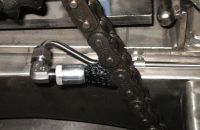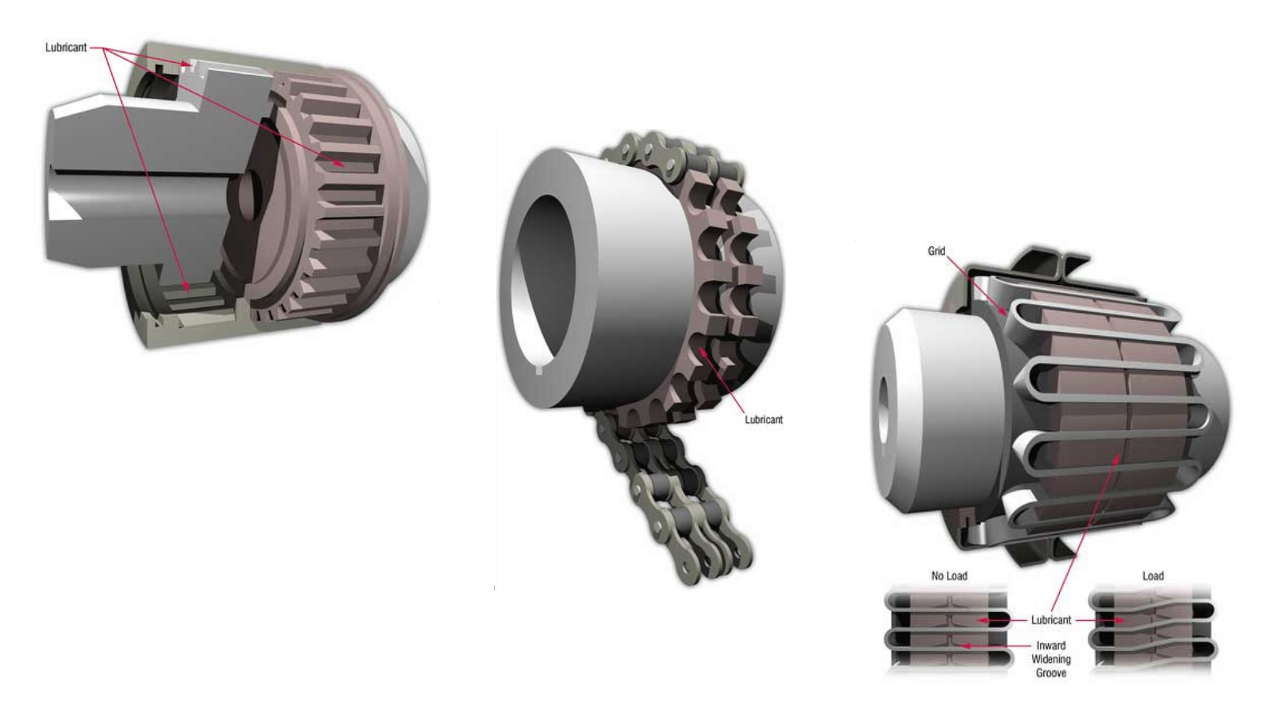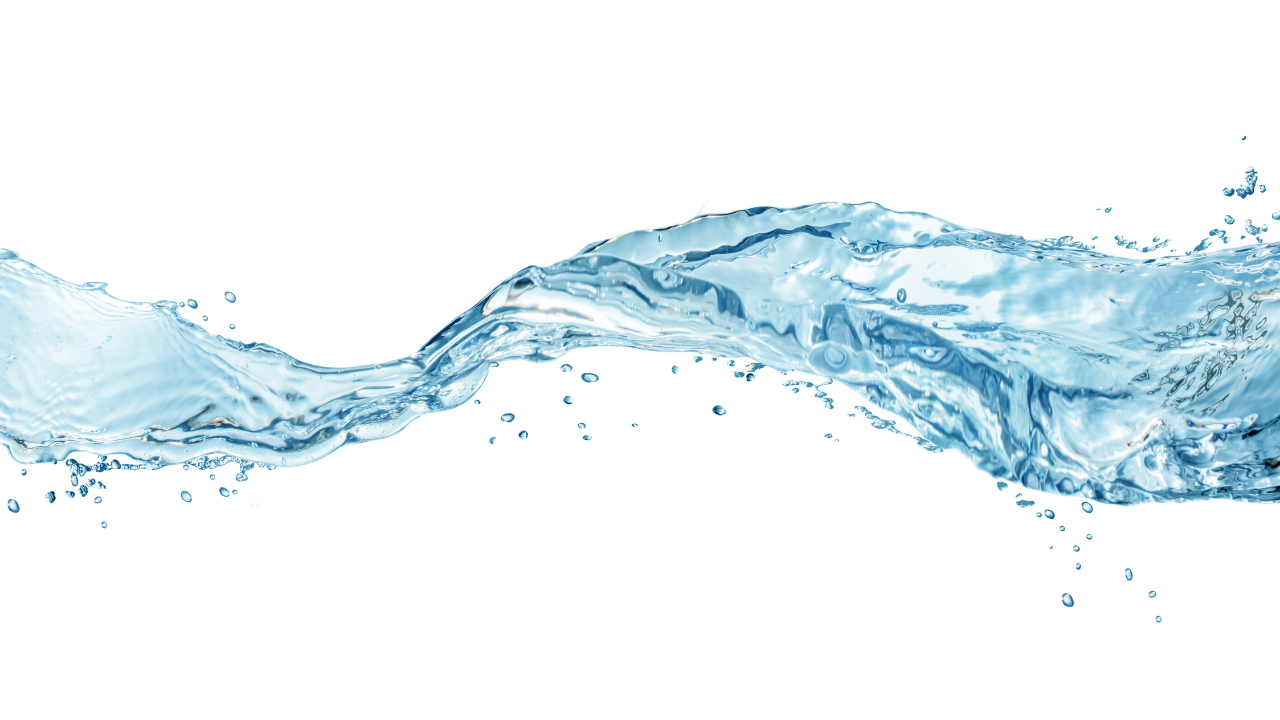Nine Lubrication Systems that Keep Chains Up and Running
Mike Deckert , Pem-mag.com
9 Lubrication Systems to Watch For
| Nine chain-lubrication systems to watch for: • 1. Traditional manual lubrication • 2-3. Spray or oil-mist systems • 4. Squirt systems • 5-6. Automated metering valves and pump systems • 7-9. Drip feed, oil cup or sight feed lubricators | |
| Nine chain-lubrication systems to watch for: • 1. Traditional manual lubrication • 2-3. Spray or oil-mist systems • 4. Squirt systems • 5-6. Automated metering valves and pump systems • 7-9. Drip feed, oil cup or sight feed lubricators |
There are several leading factors that contribute to accelerated chain wear, including incorrect chain selection and installation, inadequate chain tension, environmental exposure and, of course, improper lubrication. In fact, according to chain manufacturers, 70 percent of all failures are a direct result of some form of improper lubrication.
The following are a few key factors to consider for the various types of lubrication methods.
Traditional Manual Lubrication
Manual methods of chain lubrication can allow for visual inspection of the chain. However, this can also be time consuming and lead to difficulty in maintaining a production schedule. Worker safety can also become an issue. Choosing a lubrication system to lubricate the chain can positively impact production as this process can be done while the chain is in motion. By implementing lubrication systems, additional savings can also be realized through improved worker safety and better housekeeping and or procedures.
Spray or Oil-mist Systems
With these spray or misting systems, the user can see the oil penetration into the metal-to-metal (pin) areas. This method can also be automated. However, proper set-up and maintenance of this type of system is key to the efficient application of oil. Failure in this can result in airborne volatile organic compounds, contamination of the workplace and high lube consumption.
Squirt Systems
Typical squirt systems offer low-cost material and installation benefits to the application of an automatic system. This system is primarily used in low chain-speed applications due to the timing sequence required between the activation of the dispense valves and application of the oil onto the pins. Again, improper set-up of this system can result in inconsistent application of the lube, over-lubrication and contamination of the workplace.

Automated Metering Valves and Pump Systems
Another low-cost method that lends itself to automation is the use of positive displacement metering valves and pumps supplying oil to a brush or felt pad. This type of system eliminates the need for specific timing of lube dispensing. Care must be taken in mounting and location of the applicator — mounting brackets will need to be movable to allow for wear of the brush or felt. Dirt or dust can also build up on the applicator, contaminating the workplace or product. Whereas the spray and squirt systems both result in significant penetration of oil into the wear areas, the brush or felt applicators typically apply lube only to the exterior of the chain.
Drip Feed, Oil Cup or Sight Feed Lubricators
Simple to operate and relatively low in cost, these can have the benefits of being both automatic and remotely mounted. When using any of these, particular attention must be paid to deciding the location of the units as controlling the dispense rate can be difficult. Oil viscosity and temperature can also become a factor in maintaining a consistent oil application. Some oilers are simple in nature or design, making it difficult to control the dispense amount or rate. This can ultimately lead to high lube usage or housekeeping, environmental and workplace-safety issues.
Any system will have advantages and disadvantages. It is up to the individual plant and maintenance professionals to determine what works best for their specific application.
Mike Deckert is vice-president of FLO Components Ltd. in Mississauga, Ont., providing solutions for lubrication and fluid handling applications. For more information, visit www.flocomponents.com.
Related Articles

The Lubrication Requirements of Couplings

The Building Blocks to Creating an Effective Lubrication Program

Does Lubrication Belong in the CMMS?

Water Contamination

Ultrasound for Better Lubrication

Top Ten Ways Not to be World Class at Machinery Lubrication




